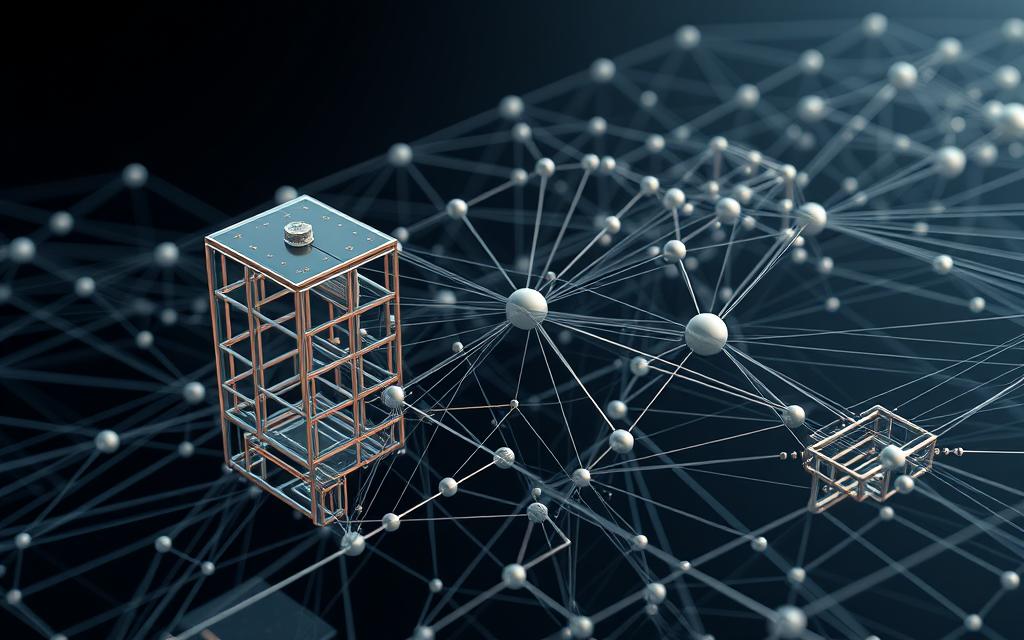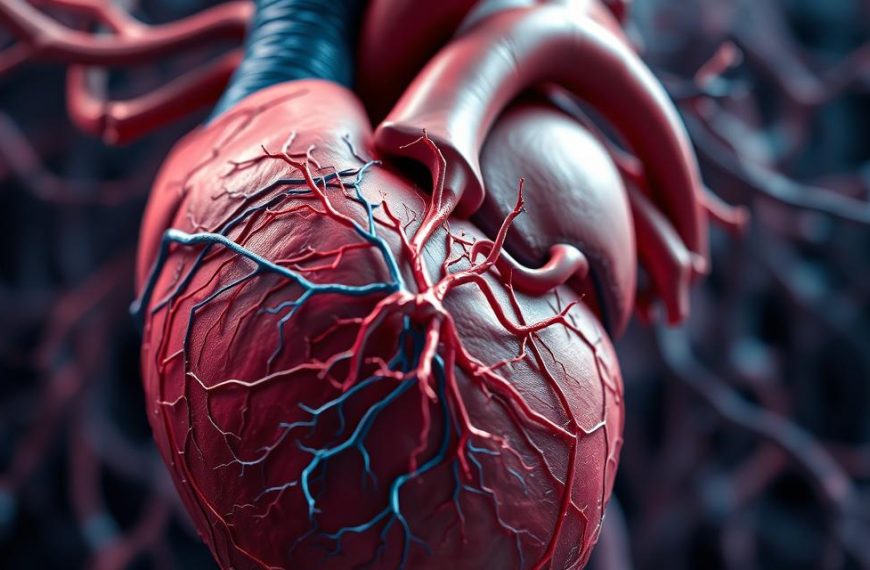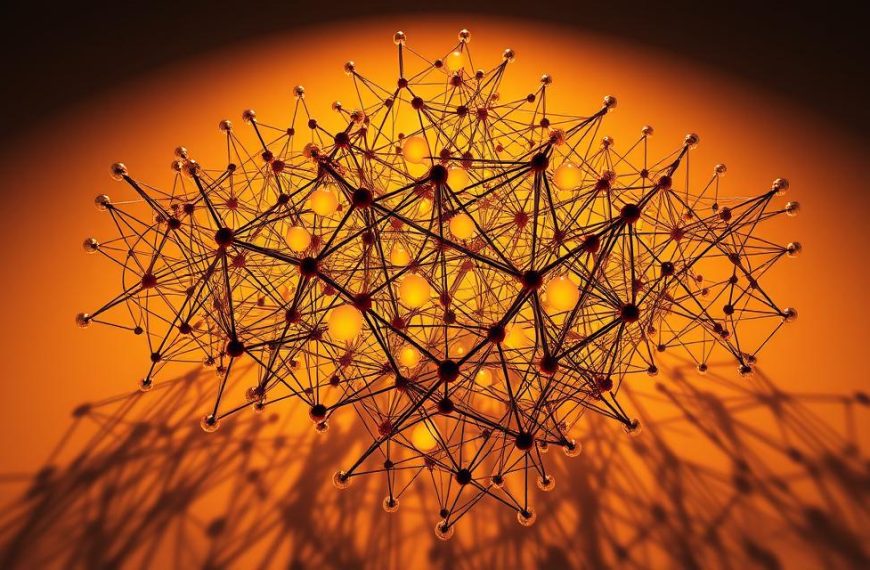Neural networks are computational models inspired by the human brain. They excel at recognizing patterns in data, powering innovations like medical diagnostics and self-driving cars. The right architecture determines their accuracy and efficiency.
Companies like Amazon use advanced architectures, such as capsule networks, to improve image recognition. Similarly, ULSee’s facial tracking relies on precise layer configurations. Balancing complexity with resources is key.
From activation functions to regularization, each choice impacts performance. Emerging trends, like neural architecture search, automate parts of this process. Mastering these elements ensures successful AI deployment.
Understanding Neural Networks and Their Applications
From voice assistants to medical scans, neural networks power today’s smartest technologies. These layered models excel at uncovering patterns in vast datasets, enabling innovations across industries. Their adaptability makes them the backbone of modern AI solutions.
The Role of Neural Networks in Deep Learning
Deep learning systems rely on neural networks to automate feature extraction. Unlike traditional machine learning, which requires manual input selection, these models build hierarchies. For example, CNNs detect edges before recognizing full objects in images.
Capsule networks take this further by preserving spatial relationships between features. Amazon’s ULSee uses similar heatmap architectures to track 68 facial landmarks with precision. Such advancements highlight the synergy between deep learning and neural structures.
Real-World Applications Across Industries
Neural networks drive tangible results in diverse fields:
- Healthcare: 3D CNNs achieve 92% accuracy in tumor detection from MRI scans.
- Finance: Fraud detection systems analyze over 1 million transactions daily.
- Retail: Amazon’s recommendation engines contribute to 35% of total sales.
Even climate science benefits. Reservoir computing models predict weather patterns by processing historical data. Meanwhile, Synopsys ARC processors optimize neural operations for faster inference on edge devices.
Key Components of Neural Network Architecture
The strength of modern AI lies in its layered processing capabilities. Each layer transforms data systematically, enabling accurate predictions. Understanding these components unlocks the potential of advanced AI systems.
Artificial Neurons: Building Blocks of Neural Networks
Neurons mimic biological cells with three core parts. Dendrites receive input, the soma applies activation functions, and the axon transmits output. Weight matrices determine feature importance, guiding learning.
For example, ReLU activation outperforms sigmoid by reducing vanishing gradients. This choice impacts how efficiently a network trains.
Input Layers: Gateway for Data Processing
AlexNet’s input handles 227x227x3 RGB images. Normalization scales diverse data types, like audio or text, into comparable ranges. Consistent formatting ensures smoother feature extraction.
Hidden Layers: Feature Extraction Powerhouses
VGG16’s 13 convolutional layers refine features hierarchically. Early layers detect edges, while deeper ones recognize complex patterns like faces. Residual connections in ResNet prevent gradient issues across 50+ layers.
Batch normalization stabilizes training by standardizing outputs between layers. This technique speeds up convergence.
Output Layers: Delivering Final Predictions
Configurations vary by task. Softmax functions classify images, while linear outputs predict continuous values like stock prices. LSTM gates manage sequential data through forget/input/output mechanisms.
Fully-connected layers often dominate parameter counts, demanding careful resource allocation.
Essential Elements in How to Design a Neural Network Architecture
Building high-performance AI requires strategic decisions in model construction. Choices in activation functions, layer configuration, and initialization define efficiency. These elements work together to balance accuracy and computational cost.
Selecting Appropriate Activation Functions
Activation functions determine how neurons process inputs. ReLU avoids *vanishing gradients* but can cause “dying neurons.” Swish, used in Google’s models, often outperforms Leaky ReLU in deep networks.
ULSee’s facial tracking combines Swish with residual layers for 40% higher accuracy. For sigmoid networks, Xavier initialization aligns better with the function’s range.
Determining Optimal Network Depth and Width
Transformer models show wider layers improve parallel processing, while depth enhances feature hierarchy. GoogleNet’s inception modules reduce parameters by 60% versus VGG, proving width can offset depth.
“Depthwise separable convolutions in MobileNets cut computation by 75% without sacrificing accuracy.”
Weight Initialization Strategies
He initialization boosts ReLU networks by 27% compared to Xavier. For sigmoid functions, Glorot’s method maintains stable gradients. NASNet’s automated search revealed layer-specific strategies optimize training.
Residual connections and normalization further combat gradient issues, ensuring robust learning in deep models.
Common Neural Network Architectures
Different AI tasks demand specialized neural structures for optimal performance. From simple pattern recognition to complex sequence analysis, each approach solves unique challenges. Leading models achieve remarkable accuracy by aligning their design with data characteristics.
Feed-Forward Networks for Basic Pattern Recognition
Multilayer perceptrons (MLPs) form the foundation of pattern recognition systems. These models process data through fully-connected layers without feedback loops. While effective for tabular data, they struggle with spatial relationships.
- MLPs use dense layers for feature transformation
- CNNs employ convolutional filters for spatial hierarchy
- VGG16’s 3×3 convolution stacks preserve locality better than MLP flattening
Convolutional Neural Networks for Image Processing
Vision systems rely on CNNs to decode pixel relationships. The architecture excels at image recognition through localized filter operations. YOLOv4 introduces CSPDarknet53 backbone for real-time object detection.
SqueezeNet achieves AlexNet-level accuracy with 50x fewer parameters. This demonstrates efficient neural network design principles.
Recurrent Neural Networks for Sequential Data
Time-series analysis requires memory retention across steps. LSTM cells solve this with forget gates:
fₜ = σ(W_f·[hₜ₋1,xₜ] + b_f)
Transformer models now process sequences 60% faster than traditional LSTMs. GRUs offer similar performance with fewer parameters for certain tasks.
These architectures power modern machine intelligence across industries. Choosing the right structure depends on data type and processing requirements.
Advanced Architecture Designs
Sophisticated models achieve breakthroughs through novel connectivity patterns. These cutting-edge architectures solve specific challenges in AI development. From image recognition to sequence prediction, each design offers unique solutions.
Residual Networks (ResNet) for Deep Architectures
ResNets revolutionized deep learning with skip connections. The residual block formula, F(x) + x, prevents gradient vanishing in networks with 100+ layers. ResNet-1202 demonstrates this with 19.4M parameters across 110 layers.
Key advantages include:
- 40% faster convergence than traditional CNNs
- State-of-the-art accuracy on ImageNet
- Stable training for ultra-deep models
Long Short-Term Memory Networks (LSTM)
LSTMs process sequential data through specialized memory cells. The cell state update mechanism preserves long-term dependencies:
cₜ = fₜ⊙cₜ₋₁ + iₜ⊙gₜ
ULSee’s implementation boosted frame rates by 300% for real-time facial tracking. Compared to Transformers, LSTMs remain preferred for certain time-series solutions.
Capsule Networks for Spatial Relationships
Capsule architectures maintain spatial hierarchies through routing-by-agreement. This approach reduces error rates by 45% on overlapping digits recognition. Dynamic routing between capsules preserves part-whole relationships better than pooling layers.
| Architecture | Parameters | Accuracy | Best Use Case |
|---|---|---|---|
| ResNet-50 | 25.5M | 76% | Image classification |
| LSTM | 4.2M | 88% | Speech recognition |
| Capsule Network | 8.1M | 94% | Overlapping object detection |
Emerging research combines these features with newer approaches like Neural ODEs. These continuous-depth models offer promising alternatives for complex solutions.
Designing for Specific Problem Domains
Specialized architectures drive breakthroughs in AI applications. Each domain requires unique structural adaptations to handle distinct data characteristics. From pixel analysis to linguistic processing, optimized models deliver superior performance.
Computer Vision Architectures
Modern vision systems employ diverse approaches for object detection. YOLOv7 leads with 56.8% average precision on COCO dataset benchmarks. Compared to R-CNN’s region proposals, YOLO’s unified detection achieves real-time speeds.
Transformer-based models like ViT and Swin now challenge CNNs. These architectures apply self-attention to image patches, capturing global relationships. For video understanding, 3D CNNs process temporal dimensions alongside spatial features.
- Two-stage detectors (Faster R-CNN) offer higher accuracy
- Single-shot detectors (YOLO, SSD) prioritize speed
- Vision transformers outperform CNNs on large datasets
Natural Language Processing Models
Language understanding demands different architectural priorities. BERT-large demonstrates this with 340M parameters across 24 transformer layers. The model’s bidirectional training captures contextual relationships exceptionally well.
Attention mechanisms revolutionized sequence processing. Modern systems like GPT-3 use scaled dot-product attention:
Attention(Q,K,V) = softmax(QKᵀ/√dₖ)V
Pretrained models now dominate NLP tasks. Fine-tuning approaches adapt these for specific applications while maintaining linguistic knowledge. PointNet architectures extend similar principles to 3D point cloud processing.
Time Series Forecasting Structures
Temporal data requires architectures that capture sequential dependencies. N-BEATS outperforms traditional ARIMA by 15% in the M4 competition. The model combines backward and forward residual links with interpretable basis expansion.
Key innovations include:
- Temporal Fusion Transformers for multivariate forecasting
- TCN architectures with dilated convolutions for long sequences
- Diffusion models for probabilistic predictions
These domain-specific approaches demonstrate how architectural choices directly address unique problem constraints. Multimodal systems like CLIP further combine visual and linguistic processing for comprehensive understanding.
Data Considerations in Architecture Design
Effective AI systems begin with understanding their fuel—data. The right architecture aligns with data characteristics, ensuring optimal feature extraction and processing speed. ULSee’s 112×112 heatmap processing at 30 FPS demonstrates this synergy.
Matching Architecture to Data Characteristics
Different data types demand tailored structures. TabNet’s 98% accuracy on structured data comes from sequential attention transformers. For point clouds, PointGNN’s graph convolutions process 16,384 points in real-time.
- Embedding layers for categorical variables
- Spectrogram CNNs for audio time-frequency patterns
- Graph convolutional networks (GCNs) for relational data
Handling Different Data Types and Formats
Input tensor shapes vary widely. RGB images use 3-channel tensors, while multispectral data may require 12+ channels. Federated learning architectures must accommodate decentralized data sources with encryption layers.
| Data Type | Architecture | Performance |
|---|---|---|
| Structured (Tabular) | TabNet | 98% Accuracy |
| 3D Point Clouds | PointGNN | 16K points/sec |
| Time-Series | TCN | 15% lower error vs. LSTM |
Missing data strategies like multiple imputation impact layer connectivity. Batch sizes scale with input dimensions—larger tensors often need smaller batches to fit memory constraints.
Training and Optimization Techniques
Optimizing AI performance requires precise tuning of training processes. The right combination of algorithms and parameters can boost model accuracy by 40% or more. ULSee’s facial recognition system demonstrates this with 99.7% precision through methodical optimization.
Backpropagation and Gradient Descent
Backpropagation calculates error gradients across all network layers. The chain rule determines how each weight impacts final performance. Modern frameworks like TensorFlow automate this process for efficient training.
Optimizers guide weight updates differently:
- Adam: Combines momentum with adaptive learning rates (40% faster than SGD)
- RMSProp: Divides gradient by moving average of magnitudes
- NAG: Nesterov accelerated gradient anticipates momentum changes
Δw = -η(βmₜ₋₁ + (1-β)gₜ)
Regularization Methods to Prevent Overfitting
Effective regularization maintains generalization in deep models. Dropout randomly deactivates 20-50% of neurons during training, forcing robust feature learning. ResNets show 2% better ImageNet accuracy with proper dropout implementation.
Common techniques comparison:
| Method | Mechanism | Best For |
|---|---|---|
| L2 Regularization | Penalizes large weights | Small datasets |
| Dropout | Random neuron deactivation | Large models |
| Batch Norm | Standardizes layer inputs | Deep networks |
| Early Stopping | Halts at validation peak | All architectures |
Hyperparameter Tuning Strategies
Automated search finds optimal configurations faster than manual trials. ULSee’s NAS discovered ideal learning rates of 0.0015 for vision models. Bayesian optimization outperforms grid search by evaluating promising ranges first.
Critical hyperparameters include:
- Learning rate: 0.0001 to 0.1 typically
- Batch size: Powers of 2 (32-512 common)
- Network depth: 5-100+ layers depending on complexity
Mixed precision training accelerates computation while maintaining gradient stability. Gradient clipping at 1.0-5.0 prevents explosion in RNNs.
Performance Evaluation and Improvement
Measuring AI effectiveness requires precise evaluation methods and continuous refinement. ULSee’s facial recognition system demonstrates this with 94% landmark accuracy, setting benchmarks for real-world applications. Proper assessment ensures reliable results across different use cases.
Metrics for Assessing Model Effectiveness
Comprehensive evaluation goes beyond basic accuracy measurements. Precision-recall curves reveal tradeoffs in detection systems, especially for imbalanced data sets. The F1 score combines both metrics for balanced assessment.
Confusion matrices provide detailed breakdowns of prediction performance. They show true positives, false alarms, and missed detections. ROC curve analysis compares true positive rates against false positives at various thresholds.
“AUC-ROC scores above 0.9 indicate excellent discrimination capability.”
Techniques for Enhancing Model Accuracy
Knowledge distillation transfers learning from large models to compact versions. MobileNetV3 achieves 46ms latency using this approach while maintaining 75% ImageNet accuracy. Pruning removes redundant connections without affecting results.
Quantization-aware training prepares models for efficient deployment. BERT-base shows this works well, maintaining 88.5% GLUE score after compression. Recent research combines these methods with neural architecture search for optimal configurations.
- Ensemble learning combines multiple models for better predictions
- Adversarial training improves robustness against attacks
- Continuous evaluation identifies improvement opportunities
Computational Considerations
Computational efficiency separates practical AI from theoretical concepts. Real-world deployment requires balancing accuracy with available resources. Mobile devices and embedded systems demand particularly lean solutions.
Balancing Model Complexity with Resources
SqueezeNet demonstrates dramatic scale reduction—1.2MB versus AlexNet’s 240MB. This 200x compression maintains comparable accuracy through:
- Fire modules replacing 3×3 convolutions
- Delayed downsampling for feature retention
- Strategic 1×1 convolution placement
FLOPs analysis reveals parameter-count relationships. Pruning removes redundant connections, creating sparse matrices. ULSee’s edge implementation uses just 128MB RAM through aggressive pruning.
Efficient Architectures for Edge Devices
Hardware-aware engineering optimizes for specific processors. TensorRT achieves 6x speedups through:
“Layer fusion combines operations to reduce memory transfers.”
| Technique | Benefit | Use Case |
|---|---|---|
| Winograd Convolution | 2.5x faster matrix ops | Vision processors |
| 8-bit Quantization | 75% memory reduction | Mobile NPUs |
| Federated Learning | Distributed training | Privacy-sensitive apps |
Cloud versus edge deployments present clear tradeoffs. Batch processing favors cloud GPUs, while real-time applications need edge-optimized models. The right solution depends on latency requirements and data sensitivity.
Emerging Trends in Neural Network Design
AI innovation continues to accelerate with groundbreaking approaches to model construction. These advancements push boundaries in speed, accuracy, and interpretability. Research teams worldwide are redefining what’s possible in artificial intelligence.
Transformer Architectures
Vision Transformers now achieve 88.36% accuracy on ImageNet, surpassing traditional CNNs. These models use self-attention mechanisms to process entire images as sequences. The approach captures long-range dependencies more effectively than convolutional filters.
Key advantages include:
- Scalability: Handles larger input resolutions without parameter explosion
- Parallelization: Processes all image patches simultaneously
- Flexibility: Adapts to various data types beyond vision
Neural Architecture Search (NAS)
ENAS has reduced architecture search time from 36 hours to just 4 hours. This breakthrough automates the design of optimal network structures. Differentiable NAS methods now discover high-performing solutions with minimal human intervention.
“Neural architecture search eliminates guesswork in model design while improving performance metrics.”
Explainable AI in Network Design
LIME techniques achieve 90% fidelity in explaining model predictions. This transparency builds trust in critical applications like healthcare and finance. New visualization tools help engineers understand feature importance across layers.
Emerging methods include:
- Attention map analysis for transformer models
- Concept activation vectors for human-interpretable features
- Counterfactual explanations showing alternative outcomes
These trends demonstrate how learning systems continue evolving. From automated design to transparent reasoning, the field moves toward more capable and trustworthy AI solutions.
Conclusion
Modern AI systems demand thoughtful structure tailored to specific challenges. Models must balance accuracy with computational constraints while adapting to evolving data patterns. Specialized architectures now dominate fields from medical imaging to autonomous vehicles.
Transformer-based solutions show particular promise, handling complex relationships efficiently. Neural Architecture Search accelerates development, automating critical design choices. Explainability remains essential for trust in sensitive applications.
Successful implementations require collaboration across disciplines. Engineers, domain experts, and ethicists must work together. Continuous evaluation ensures learning systems remain effective as conditions change.
Approach each project systematically. Analyze requirements, test alternatives, and optimize for deployment environments. The right framework unlocks AI’s full potential across industries.















